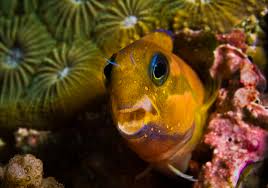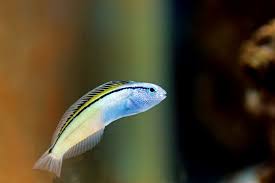
In Chinese culture, the dragon is more than just a mythical creature. It is a powerful symbol deeply entwined with the very fabric of Chinese cosmology, spiritual beliefs, and understanding of the universe’s origin and development. As a creature that exists between heaven and earth, the dragon is seen as a link to the divine, a celestial being that commands the forces of nature, and a symbol of power, transformation, and balance. In the realm of Chinese cosmology, the dragon plays a central role in explaining the cyclical nature of the universe, the forces of creation and destruction, and the spiritual harmony that governs all existence.
This article delves into the meaning of the dragon in the context of Chinese cosmology, exploring its connections to the development of the universe, the balance of forces in nature, and its profound symbolism in Chinese spiritual beliefs.
The Role of the Dragon in Chinese Cosmology
Chinese cosmology is rooted in the ancient understanding that the universe is a living, dynamic system governed by cosmic forces. The Chinese view of the cosmos is often expressed through the philosophy of yin and yang and the Five Elements (wood, fire, earth, metal, and water), which are in constant interaction, creating cycles of growth, decay, and renewal. The dragon, as a creature that embodies the powerful forces of nature, plays a crucial role in maintaining harmony and balance within this cosmic system.
The dragon is not only a symbol of strength and power but also a representation of the balance between opposing forces. It embodies the yin and yang, with its fierce energy symbolizing yang, while its connection to water and the earth represents yin. Through this interplay, the dragon signifies the interdependent forces of creation and destruction that shape the universe.
The Dragon as the Guardian of the Cosmic Order
In Chinese cosmological beliefs, the universe is often depicted as a vast, interconnected web where all elements—celestial and terrestrial—are in constant flux. The dragon is seen as the guardian of this cosmic order, acting as a protector of harmony in the natural world. It is believed that the dragon controls natural elements such as rivers, seas, and rain, all of which are essential to life and the balance of the universe.
One of the key beliefs in Chinese cosmology is the idea of the cosmic dragon, a dragon that rules over the forces of nature and maintains the stability of the cosmos. The celestial dragon is thought to reside in the heavens, where it controls the flow of the Water Element, which is associated with the emotional and spiritual realm. As the guardian of the cosmic waters, the dragon ensures the balance between the sky and earth, ensuring the cyclical changes of the seasons and the preservation of harmony in the natural world.
In some traditions, the dragon is also believed to carry the sun or the moon across the sky, symbolizing its ability to influence celestial events and the passage of time. Through its role in governing the heavens and controlling cosmic forces, the dragon is seen as both a powerful ruler and a benevolent protector, maintaining the delicate balance that sustains life.
The Dragon and the Myth of Creation
Chinese cosmology is rich with creation myths, and the dragon plays a prominent role in many of these ancient stories. The myth of the Pangu, one of the most famous creation myths in Chinese mythology, illustrates the dragon’s central role in the creation of the world.
According to the myth, Pangu, the first living being, emerged from the primordial chaos. As he grew, he separated the heavens and the earth, creating the universe. It is said that as Pangu lay in the cosmic void, a dragon was born from his breath. The dragon, often depicted as a cosmic serpent, helped shape the world by guiding the flow of the rivers and seas, acting as a divine force that brought order to the chaos.
The presence of the dragon in the creation myth emphasizes its importance in Chinese cosmology as a force of transformation and renewal. The dragon, like Pangu, is seen as a creator, a being capable of shaping the universe and bringing about change. It symbolizes the power of creation, renewal, and growth, as well as the continual process of cosmic evolution.
The Dragon and the Yin-Yang Philosophy
The philosophy of yin and yang—the idea that opposites are interconnected and interdependent—forms the foundation of Chinese cosmology. The dragon, as a symbol of balance, is often associated with the yin-yang philosophy, representing the dynamic interaction of opposing forces that shape the universe.
In this context, the dragon is viewed as the embodiment of yang, the active, masculine force. Yang represents light, energy, heat, and the heavens. The dragon, with its power and vitality, reflects these attributes, acting as a force of action and creation. However, the dragon’s close relationship with water and the earth also ties it to yin, the passive, feminine force. Yin represents darkness, stillness, coolness, and the earth, and the dragon’s association with these elements demonstrates its dual nature as both a destructive and regenerative force.
This duality is essential to understanding the dragon’s role in Chinese cosmology. The dragon embodies the complementary forces of yin and yang, showing how opposing forces can work together to create harmony and balance in the universe. Its ability to move between the heavens and the earth symbolizes the balance between the spiritual and material realms, bridging the gap between the human world and the divine.
The Dragon and the Five Elements
The Five Elements (wood, fire, earth, metal, and water) are central to Chinese cosmology and traditional Chinese medicine. These elements are believed to govern all aspects of life and are in constant interaction, creating cycles of growth and transformation. The dragon is closely associated with the Water Element, which is linked to the emotional and spiritual realm.
In Chinese cosmology, the dragon’s control over water signifies its ability to influence the flow of life, representing both the potential for life-giving forces (such as rain) and the destructive power of floods. Water, as an element, is associated with the winter season and the north direction, which are linked to introspection, wisdom, and stillness. The dragon, as the ruler of water, represents the transformative power of this element, which can bring about both destruction and renewal.
The dragon’s connection to the Water Element also highlights its role as a mediator between the heavens and the earth. As it moves between the two realms, the dragon channels the forces of nature, guiding the flow of water and maintaining the balance of the Five Elements.
The Dragon and Immortality
In Chinese cosmology, the dragon is often associated with the concept of immortality. Many myths and stories describe the dragon as a being capable of transcending the cycle of life and death, symbolizing eternal life and the endless flow of energy in the universe.
One of the most famous stories that highlights the dragon’s connection to immortality is the myth of the Jade Emperor, the supreme deity in Chinese Taoism. According to the myth, the Jade Emperor created the world and the gods to govern it, but he required the help of the celestial dragon to maintain order and harmony in the cosmos. The dragon is often depicted as a symbol of the eternal flow of life, representing the continuity of the universe and the perpetual renewal of all things.
The dragon’s connection to immortality is also reflected in its portrayal as a symbol of the Qi, the life force that permeates all living beings. In Chinese medicine and Taoism, Qi is believed to flow through the body, sustaining life and maintaining health. The dragon, with its ability to control the flow of Qi, represents the life force that connects all living things and allows the universe to remain in balance.
The Dragon and Cosmic Harmony
In Chinese cosmology, the dragon plays a key role in maintaining cosmic harmony. It is seen as the protector of the natural order, ensuring that the forces of creation and destruction remain in balance. The dragon’s power to control water, influence the seasons, and guide the flow of life underscores its importance as a guardian of the universe’s cyclical nature.
Through its connection to the heavens, earth, and water, the dragon embodies the Chinese belief in the interconnectedness of all things. It symbolizes the balance between opposites, the unity of the natural world, and the eternal flow of life. The dragon, as both a creator and destroyer, represents the transformative power that governs the universe, shaping the cosmos through its dynamic energy and its ability to transcend the limitations of time and space.
Conclusion: The Dragon as a Cosmic Force
The dragon holds a central place in Chinese cosmology, where it represents the forces of creation, transformation, and balance that govern the universe. From its role as the guardian of natural order to its connection to the elemental forces of water and earth, the dragon embodies the cyclical nature of existence and the ongoing process of cosmic evolution.
In Chinese belief, the dragon is a symbol of harmony, unity, and immortality. Its presence in cosmology highlights the deep interconnections between heaven, earth, and humanity, demonstrating the importance of balance in maintaining the harmony of the universe. As a cosmic force, the dragon continues to inspire awe and reverence, representing the eternal flow of energy and the enduring power of creation in Chinese culture.










